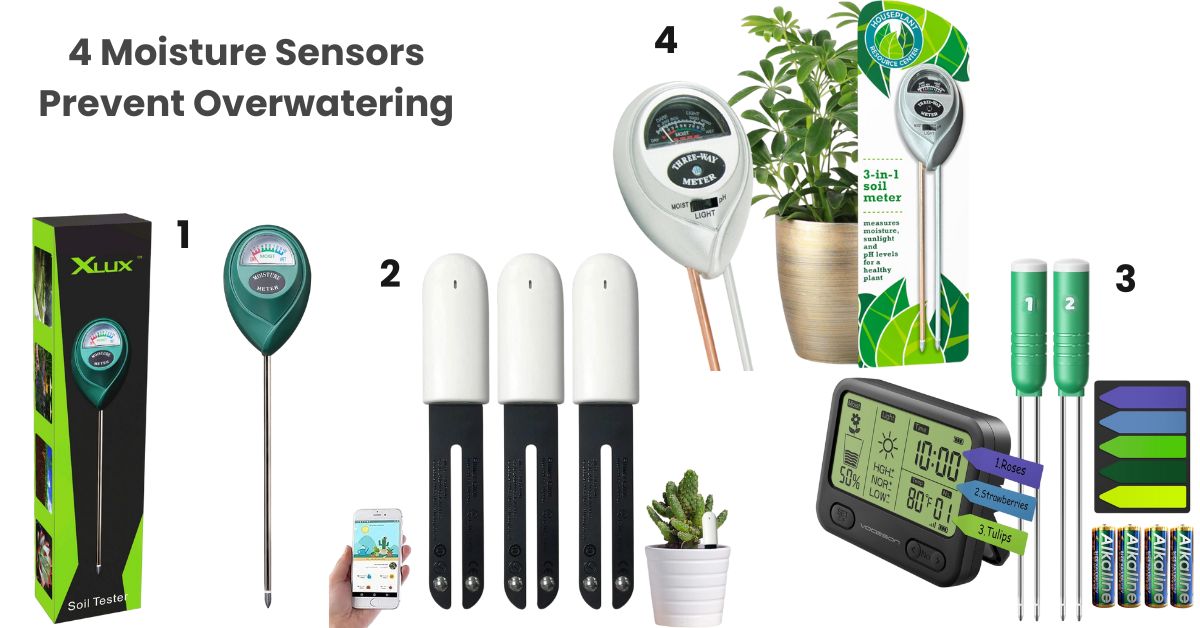Moisture sensors measure the soil moisture to ensure you don’t overwater your plants. The four sensors in different places ensure you understand the needs of all your plants. You can water plants only when and where they require it.
Giving your plants a drink helps them stay healthy and rooted. Even watering helps stop your garden from having either dry or wet areas. Every part of your garden has the perfect amount of water.
Moisture sensors allow you to use less water. You use just what you require, so you save water, time and money. It’s a clever approach to caring for the environment and your plants.
Table of Contents
ToggleUnderstanding Overwatering and Its Risks
It’s common for people to water their plants too much. It smothers the roots so that they can’t get the oxygen they need. This causes root rot which over time kills the plant. Overwatering can harm your plants and make them more likely to fall sick.
If you water your plants too much, the soil loses many of the nutrients they need. If plants are missing these, they have problems growing healthily. Over the years, soil gets packed and the balance it used to have is gone. Such ways of farming harm both plants and the soil.
Why Multiple Moisture Sensors Are Better Than One?
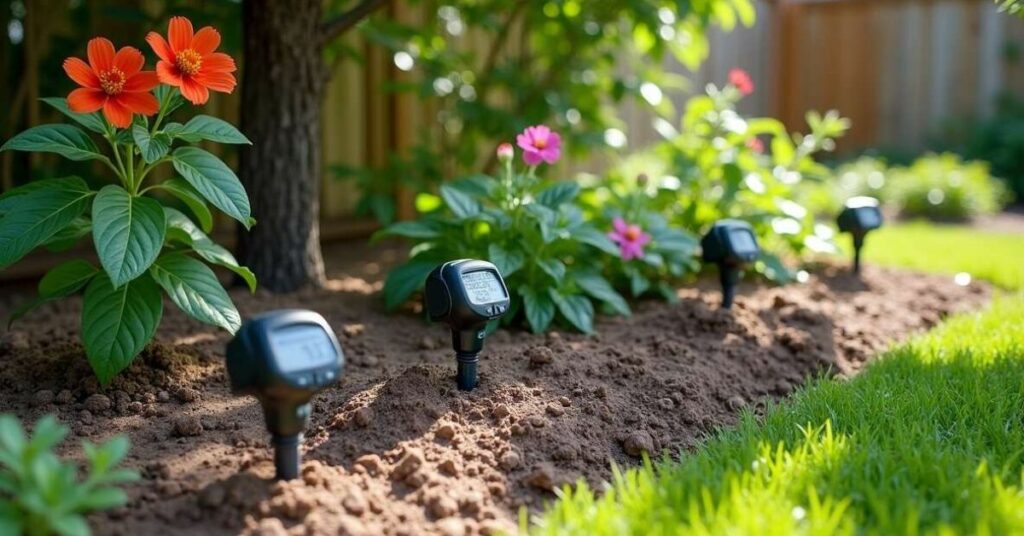
Some parts of your garden may be different from others. You’ll notice that some places in the carpet dry out quickly, whereas others remain wet for a longer period. The amount of water in your plants may change according to the sun, the type of plant and how your soil feels. Just one sensor might not catch these differences. As a result, your plants receive uneven amounts of water and may not thrive.
Many moisture sensors give you accurate data for each zone. Every sensor looks at the specific needs of its area, so you can water more efficiently. As a result, you can look after your plants better and waste less.
- Check the moisture in all parts of your garden.
- Be sure not to overwater or underwater particular areas in your garden.
- Make sure you’re not giving your plants too much or too little water.
- Find areas that are either too dry or too wet as soon as you can.
- Decide faster with the help of real-time information.
How Sensors Measure Soil Moisture Accurately?
The sensors are set up near the roots, down below the surface. They measure the soil’s moisture level to an extent below the surface. It helps you see what your plants really require. You don’t water the plants unless they truly need it.
The sensors transmit information instantly to your control system. You can easily adjust your watering schedule based on the information. In this way, plants remain healthy and water isn’t wasted. Besides, it helps you save time and makes gardening easier.
Setting Up 4 Sensors for Optimal Coverage
For best results, spread the sensors around your garden. Select places for your plants that get sun, are in shade, are dry or are damp. As a result, you can see all the moisture levels throughout your building. It allows you to make a watering plan that is simple and fair.
Choosing the right place prevents any driver from having blind spots while driving. All the zones are given the proper care. You won’t have to worry about one part of your plant becoming too wet while another is too dry. If your sprinkler covers everything evenly, your garden will stay healthy and watered.
1. XLX Soil Moisture Meter
Features:
- accurate moisture detection, deep soil reading, avoids surface guesswork, helps watering decisions, improves plant care
- large readable dial, clear moisture zones, ten-level scale, quick display response, no waiting needed
- single probe design, root-safe testing, minimal soil disturbance, corrosion caution tip, wipe after use
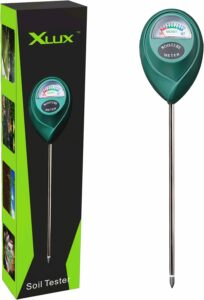
What’s great about it:
- easy to use, instant readings
- reliable moisture detection, saves plant health
- simple design, helps avoid root rot
2. Soil Moisture Meter 4 in 1
Features:
- tracks four parameters, monitors soil moisture, checks light intensity, reads soil fertility, measures temperature changes
- connects via Bluetooth, app data sync, supports 6000+ plants, saves growth record, works on Android/iOS
- accurate sensors, rust proof stainless steel probes, EC5 standard reading, 100 lux light accuracy, 0.5℃ temperature precision
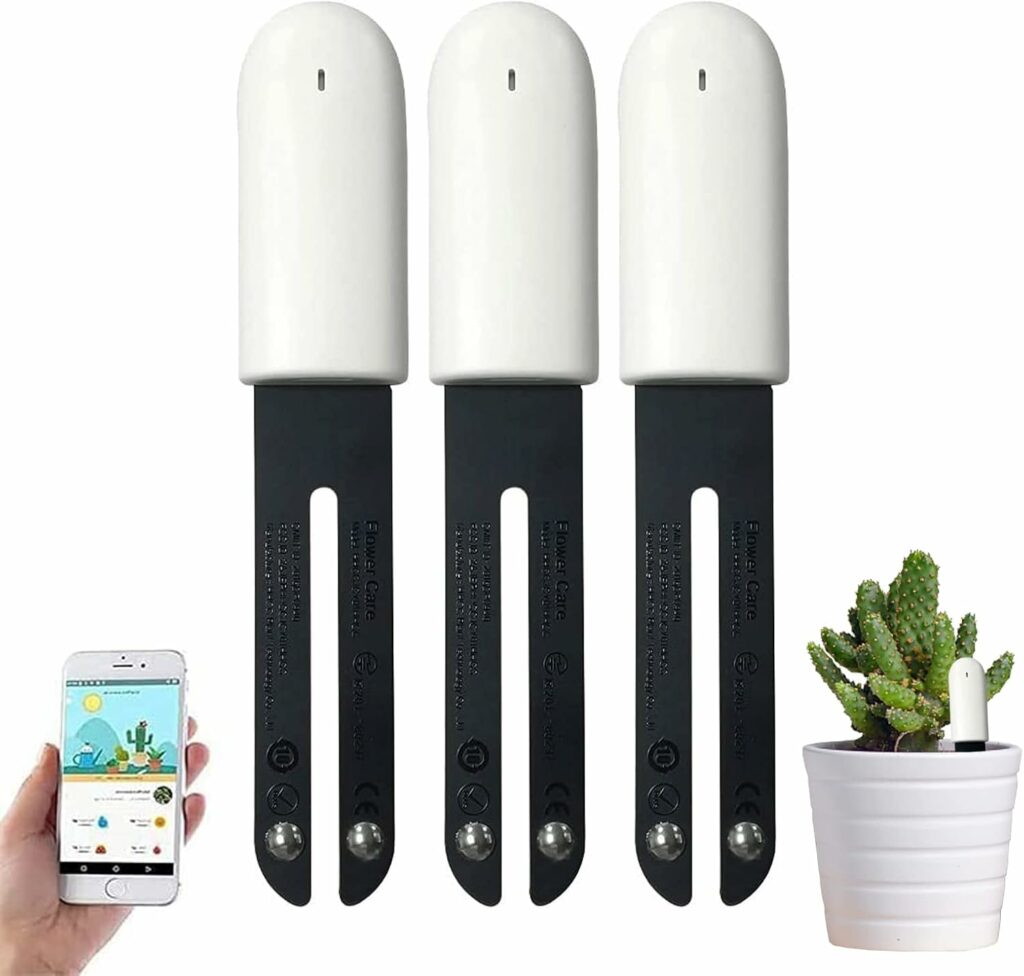
What’s great about it:
- user-friendly design, clear readings
- quick setup, reliable data
- detailed tracking, app history
3. VODESON 4in1 Plant Soil Moisture Meter
Features:
- long-range wireless, 230ft RF connectivity, indoor-outdoor use, avoids liquid submersion, reliable signal in open areas
- precise moisture tracking, monitors temperature, measures sunlight, quick LCD display, instant plant environment updates
- waterproof sensor, corrosion-resistant build, battery-powered longevity, alerts low moisture, optimized for soil only
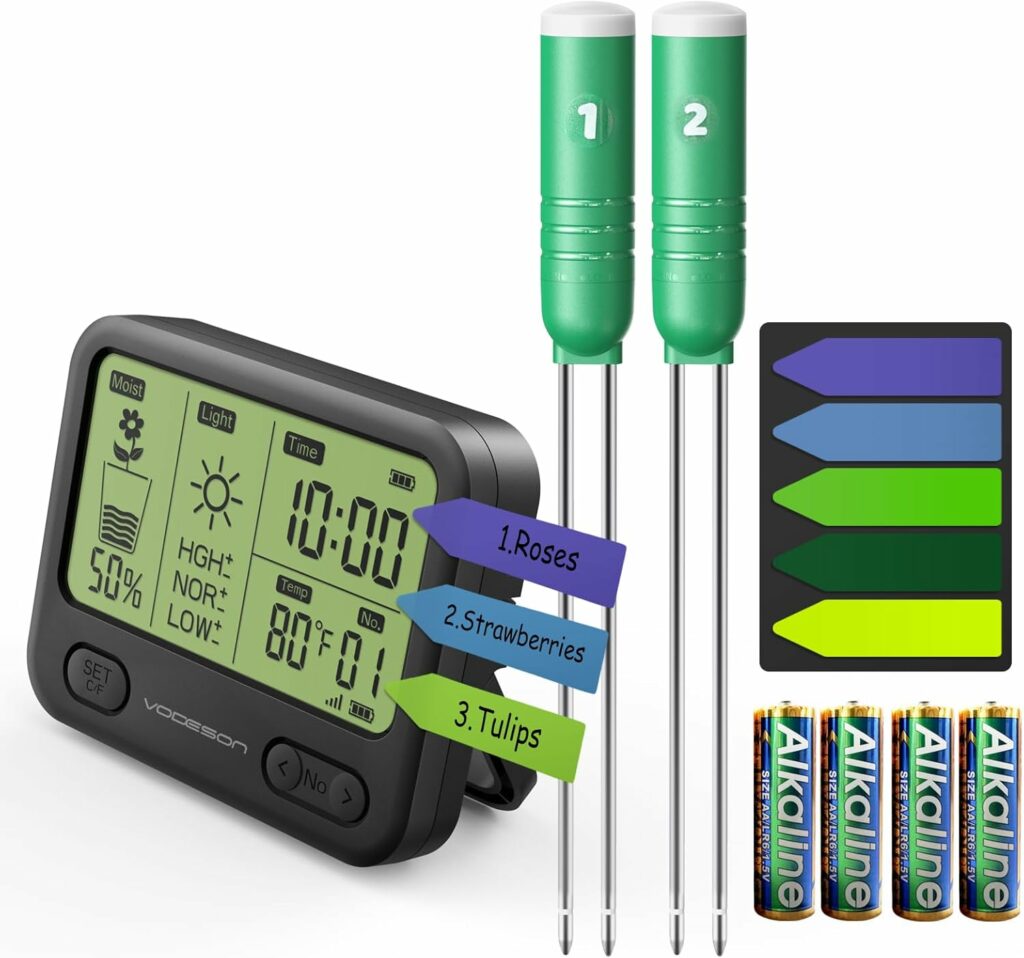
What’s great about it:
- works well outdoors, reliable moisture alerts
- simple setup, perfect for busy plant lovers
- tracks multiple conditions, no app needed
4. 3-in-1 Soil Meter Optimize Plant Health with Moisture
Features:
- measures soil moisture, detects light level, tests soil pH, dual sensor setup, ideal for houseplants
- prevents root rot, avoids leaf burn, real-time soil analysis, deep root insights, ideal for aerated soils
- battery-free operation, simple toggle switch, indoor and outdoor use, easy to handle, supports proactive care
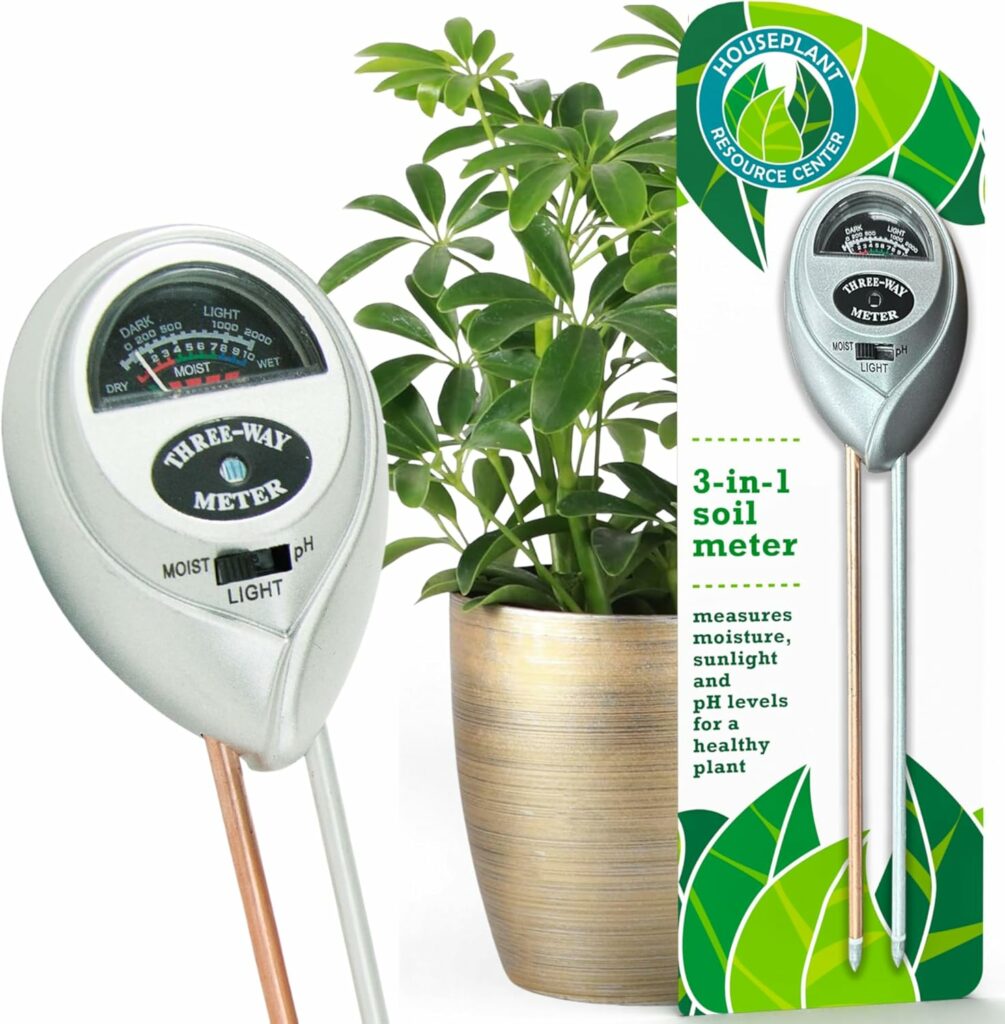
What’s great about it:
- easy to use, perfect for quick checks
- helps prevent overwatering, keeps plants healthy
- includes helpful care tips and guidance
Integrating Sensor Data with Smart Irrigation Systems
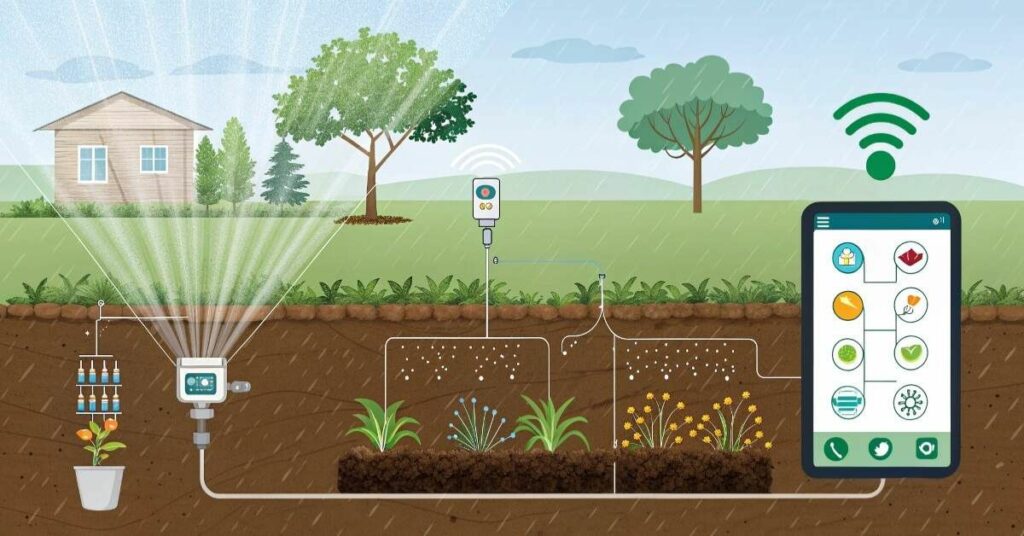
Moisture sensors are needed to improve how smart irrigation systems function. The system analyzes sensor data and waters only at the right time. The controller is able to determine the time, water amount and sprinkler zone all by itself. You won’t need to keep checking the garden or guess what your plants need.
It is also affected by changes in weather. On damp or rainy days, it doesn’t water the plants so the soil is not overly wet. You’ll produce less waste and have fewer issues with your plants.
Here’s how it helps:
Condition | Smart Response |
Dry soil | Watering starts automatically |
Moist soil | Watering paused or reduced |
Rain detected | Irrigation temporarily turned off |
High humidity | Watering delayed to prevent overuse |
Environmental and Economic Benefits of Preventing Overwatering
Overwatering is wasteful, so make sure to keep it from happening. It also makes your utility bills smaller. Using less water in your garden makes it greener. Making this choice means you can live more sustainably and keep resources from harm.
Proper watering helps keep your plants safe. Since the roots are strong, most plant diseases usually won’t harm the plant. The soil is still good quality and is full of living things. As a result, your entire garden looks nicer and requires less upkeep.
FAQ’s
How do moisture sensors prevent overwatering effectively?
Soil moisture is detected by sensors which stop watering when it is not needed and help keep your plants healthy.
Why use four moisture sensors instead of just one?
Four sensors are used to water different parts of your garden, making sure every part gets enough water.
Can moisture sensors save water and reduce bills?
They help you conserve both water and cash because they only water your garden when it’s necessary.
Conclusion
Having four moisture sensors in your garden allows you to water it in the best way. They show you the moisture levels in each zone of your garden. So, you do not water too much and help your plants stay healthy.
Besides, using less water helps you save money and protects nature. Your garden maintains a healthy balance and strong structure all year, thanks to smart sensors. It’s an easy action that offers a lot of benefits for you and your plants.

